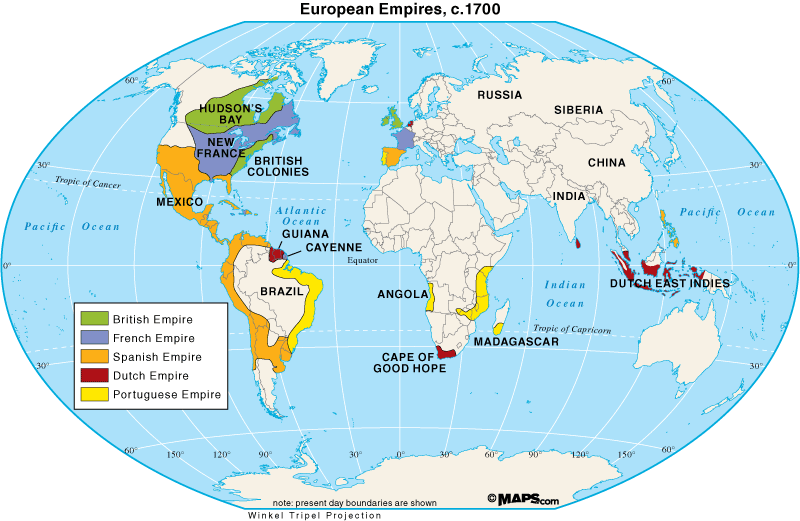Mercantilism
From the 15th to the 18th century, when the modern nation-state was being born, mercantilism developed as an economic system based on:
- private property.
- the use of markets for basic organization of economic activity.
- a focus on self-interest of the sovereign (the state), not the self-interest of the individual owners of economic resources B therefore, the basic purpose of economic policy being to strengthen the national state and to further its aims.
- the government exercising much control over production, exchange, and consumption.
- the state being preoccupied with accumulating national wealth in form of gold and silver.
- the best way to acquire gold and silver being through trade B a surplus of exports over imports--and establishing colonies.
Mercantilism is an economic system which works to increase a nation's wealth by government regulation of all of the nation's commercial interests.
Mercantilism is the idea that colonies existed for the benefit of the Mother Country. In other words, the American colonists could be compared to tenants. Another facet of mercantilism was the idea that the wealth of the world was fixed. The most important thing for Britain to do was keep its money and not trade with other countries to get necessary items. The colonists role was to provide many of these items to the British.

http://www.maps.com/ref_map.aspx?pid=12859
The Enslavement of Africans by Europeans and their forced migration to the Americas = a dynamic of mercantilism:

According to European colonial officials, the abundant land they had "discovered" in the Americas was useless without sufficient labor to exploit it. Slavery systems of labor exploitation were preferred, but neither European nor Native American sources proved adequate to the task.
The trans-Saharan slave trade had long supplied enslaved African labor to work on sugar plantations in the Mediterranean alongside white slaves from Russia and the Balkans. This same trade also sent as many as 10,000 slaves a year to serve owners in North Africa, the Middle East, and the Iberian Peninsula.
Having proved themselves competent workers in Europe and on nascent sugar plantations on the Madeira and Canary Islands off the coast of Africa, enslaved Africans became the labor force of choice in the Western Hemisphere—so much so that they became the overwhelming majority of the colonial populations of the Americas.
Of the 6.5 million immigrants who survived the crossing of the Atlantic and settled in the Western Hemisphere between 1492 and 1776, only 1 million were Europeans. The remaining 5.5 million were African. An average of 80 percent of these enslaved Africans—men, women, and children—were employed, mostly as field-workers. Women as well as children worked in some capacity. Only very young children (under six), the elderly, the sick, and the infirm escaped the day-to-day work routine.
More than half of the enslaved African captives in the Americas were employed on sugar plantations. Sugar developed into the leading slave-produced commodity in the Americas. http://news.nationalgeographic.com/news/2003/01/0131_030203_jubilee2.html
The Triangular trade:

Source: http://members.tripod.com/lylesj/trade/tritrade.html